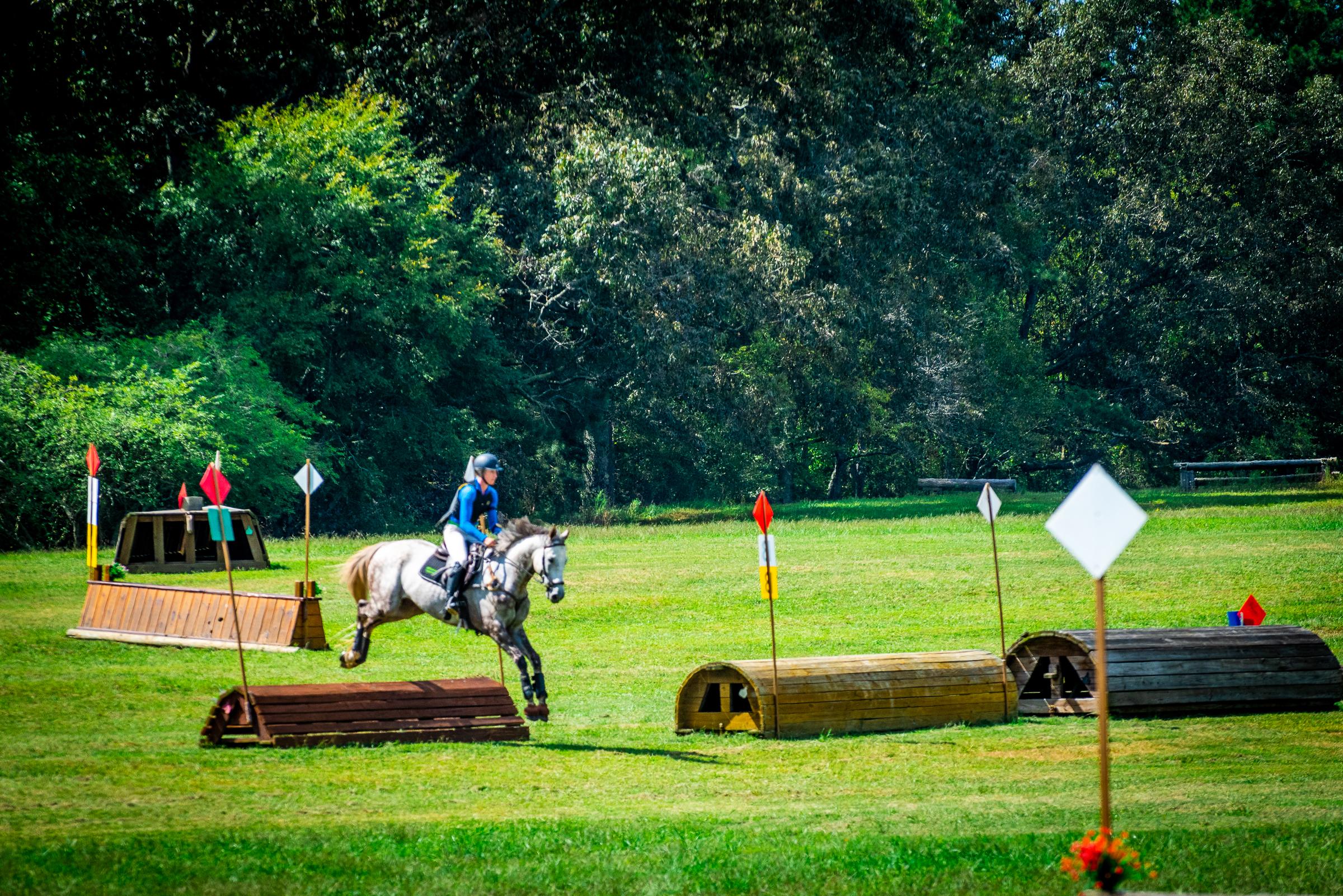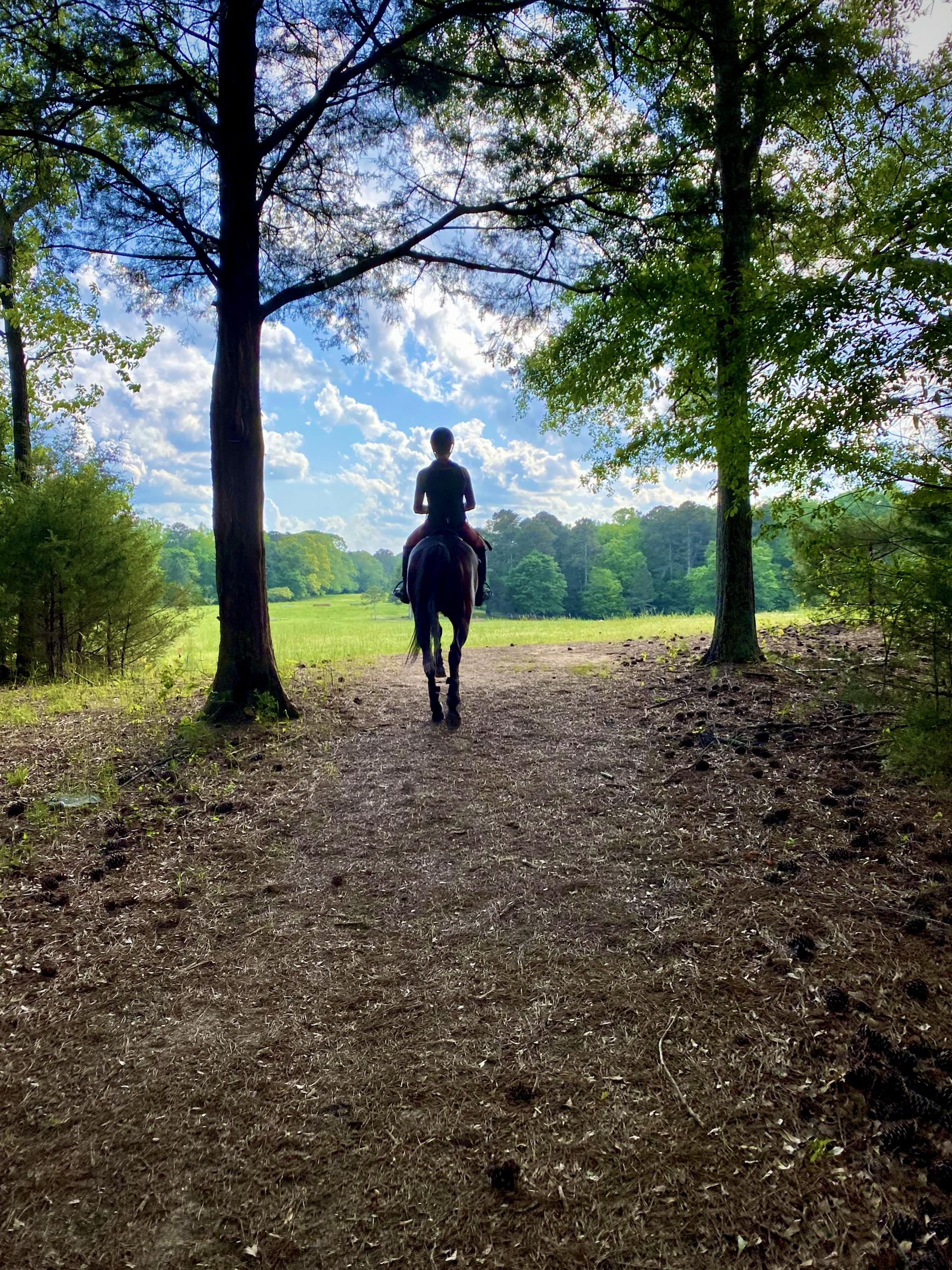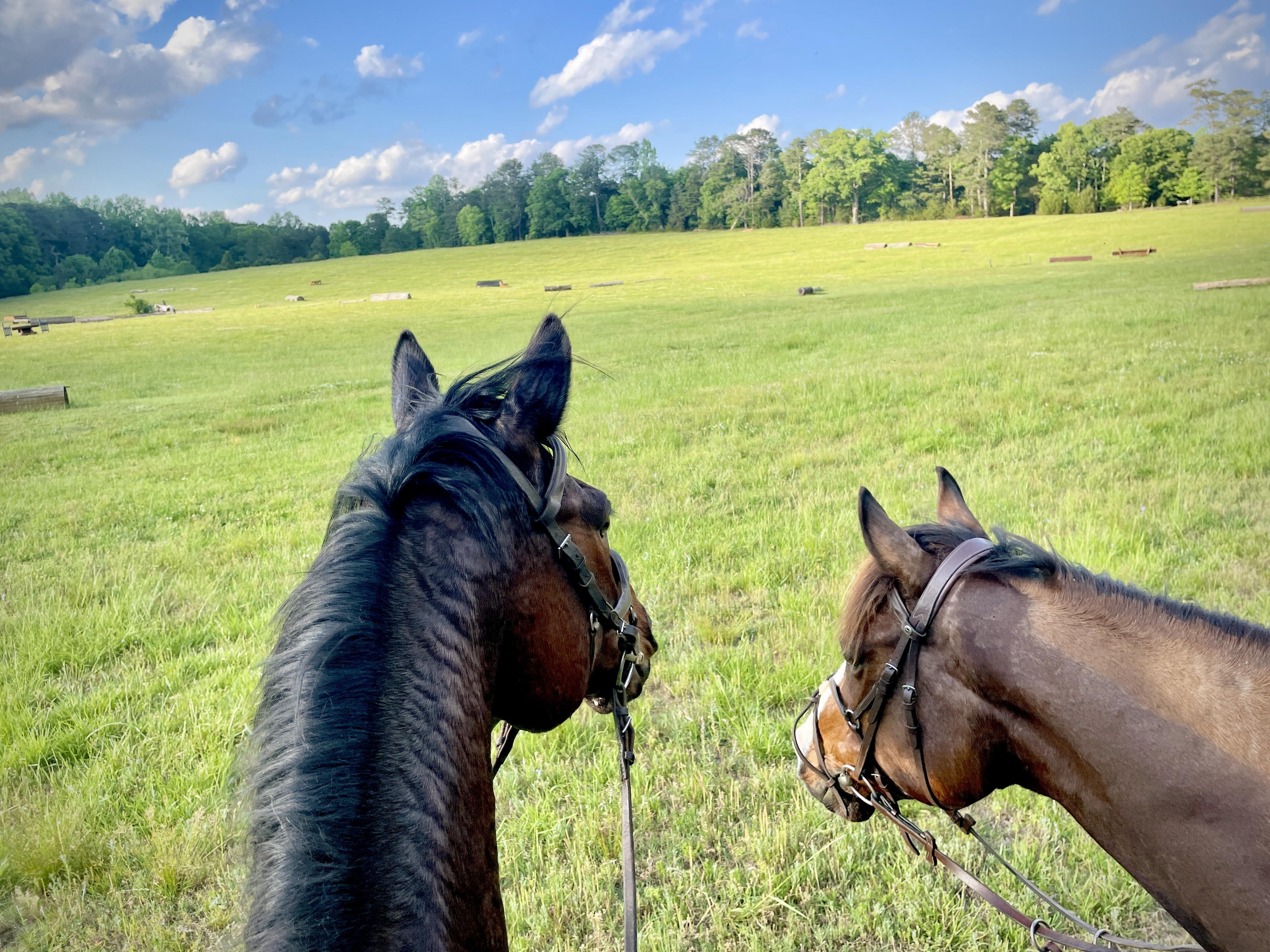
Thoroughbred Logic — Intentional Riding (The Cross-Training Edition)
“Especially when dealing with the ‘out of arena’ form of cross training, I hear a lot of ‘but we’re not ready.’ When riding intentionally … folks will regularly talk themselves out of the fun and back into circles at one end of the arena.”
Welcome to the next installment of Thoroughbred Logic. In this weekly series, Anthropologist and trainer Aubrey Graham, of Kivu Sport Horses, will offer insight and training experience when it comes to working with Thoroughbreds (although much will apply to all breeds). Come along for the ride as she offers her logic on how to ride intentionally through cross training.
Recent Thoroughbred Logic articles discussed two major tenants of intentional riding – having training goals to work on and towards, and then also being willing and able to scrap even the best laid plans to ride the horse that you have that day. Another major part of the intentional riding plan is the ability to get away from drilling, away from the ad-nauseum circling, and go cross-train.
On Sunday, I hauled two Thoroughbreds out to Ashland Farms for a casual cross country school. As we cantered up the hill from the back field, I looked back at Amanda riding Elliot (JC Surety) and her enormous smile was enough to confirm that the speed was better than A-OK. Both two legged and four legged creatures were having a damn blast.
I’m in the same boat — give me a grass field and a good gallop, and you’re not going to be able to wipe the idiot grin off my face. I need it, and while it might be anthropomorphism, I think my horses do, too. It has been that way since I can remember… though such galloping on a tiny Welsh pony may also have been the cause of a nearly broken leg at eight years old. Oops.
Cross-training is a huge category. I use the term loosely to indicate doing something — anything — outside of one’s norm to purposely lessen goal-driven pressure. The concept includes everything from leaving the arena, to changing out of your usual tack and playing at a less familiar discipline, or pulling the saddle off entirely and riding bareback (we’ll get to that one specifically in another article). In a friend’s case, it has recently been saddling up her eventing Thoroughbreds to go chase errant cows in their back woods.
Especially when dealing with the “out of arena” form of cross training, I hear a lot of “but we’re not ready.” When riding intentionally (where we’re apt to overthink everything), folks will regularly talk themselves out of the fun and back into circles at one end of the arena. I have a pretty cavalier attitude to cross-training and the idea of “ready,” as in, I generally don’t worry about it. If you can confidently walk, trot, canter and slow back down in an arena, **usually** you’ll be just fine in other tack, in a field or off property.
With the Thoroughbreds, I try to remind folks that they have seen a ton before they are even three years old. They have witnessed buzzy atmospheres of sales and race days, loudspeakers, hustle, and all the sights and sounds that come with the back of the track, the paddock, and the gate. It takes a lot to make them come unglued, and most manage to re-enter second career environments and cross-training options without so much as a meltdown.

Mountain Holiday (now here in eventing training) takes in the sights and sounds at the track as a two-year old. Photo Courtesy of Cheryl Nations.
That said, when thinking about cross-training as part of intentional riding, it makes sense to do what is possible to set these horses up for success. Going back to this weekend’s XC school — there was a whole bunch of carefully thought-through decisions aimed at making it a positive experience. My mount, Boomer (JC Bada Bing Bada Boom), came into training here due to a checkered past of “interesting” behavior off property. He gets a tad nervous when hauling and had also never seen cross country. Setting him up to succeed and have fun meant not only supplying a confident ride, but also bringing along a buddy – enter Elliot with Amanda in the irons.
While some horses do just fine on their own off-property, a larger percentage do well when they have a friend or a more experienced horse to rely on. On the track, much of what racehorses ‘do’ is done in groups. They hotwalk together, gallop out together, and in the paddock, en route to the gate and at the finish, there is a team of people and pony horses getting them where they need to go. Friends are a good thing.
With his new bud, Boomer hauled confidently, settled into the open field without a problem, hacked on a loose rein, jumped all the things and eventually got brave enough to go into the water. I suspect he, like the rest of us, enjoyed getting to canter across a the grassy expanse, unfettered by fence lines. And with that intentional cross training success, we now get to see what he does at his first Beginner Novice three-phase in two weeks.
Boomer is a super (almost boring) example of how if you set it up, smart, cross-training can go well. That said, it doesn’t always go as planned, and sometimes the best laid plans just end up being “interesting.”
Artus (Artus Court) makes for a fun counter example. This leggy gray, owned by Stacey Tolison, came for training and made huge strides literally and figuratively in the arena. After a couple months he was happily jumping quietly through 2’6” courses and willingly doing all the things. One day last summer, rain had finally showed up and turned my arena into a swamp. With a handful of students, we brought Artus out for a group ride on the barn road. Artus, who was usually pretty unflappable, cantered at walk speed… sideways. After two or three laps up and back, I gave up and took him back to the barn to walk out in hand. He was lathered, and his brain did summersaults.
Working through a process of elimination, I tried the roads and then the at-home field again a few weeks later without the group. He gave the exercise the same big fat “nope.” Same sideways canter regardless of what gait you aimed to ride (I mean…at least he’s talented laterally). Still, Artus didn’t seem like a horse who couldn’t hack the field… we just hadn’t figured it out yet. So off property we went.
Despite his lack of desire to leave the arena and stay quiet at home, when hauled to a new site, he was shockingly stellar. Artus went cross country at Ashland during one of my clinics and proved that he could canter (and also walk and trot) straight outside an arena. He came back for a Tadpole Horse Trial a few weeks later and took home the blue with quiet rides in each phase.

Artus Court makes easy work of the Big Cheese Eventing course at Ashland Farms last year. Photo by the Kivu Team.
Sometimes the cross-training component of intentional riding comes as easily as a hack out or a trail ride. Sometimes, it is a process of carefully thought-through steps and a process of trial and error. Usually mixing things up is a positive experience; occasionally it is a shit show. Nevertheless, I inevitably come away with a better understanding (and appreciation) of the Thoroughbred heart and brain, complete with quirks and quandaries. But even better, I always come back to the arena with a renewed desire to train up smart, and work intentionally towards the next goal as much as towards the next field trip.










